I’m all for careful planning. It makes sense to come up with a concept, choose the right yarns and weave structure, sample – sample -sample, cut a muslin, and then-finally- cut and sew your fabric with the greatest of care.
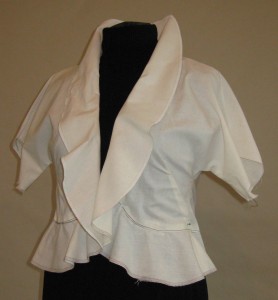
Muslin test garment
However, there is another way to approach the construction of a handwoven garment. I’ll preface this by saying that it works for me and the reason that it does is because I have a large backlog of woven fabric, much of it done when I was using weaving as a stress busting activity. There are also the pieces that I made with a certain garment in mind but I changed my mind when I saw the finished material. I also do large samples- they are always big enough to make something- and I always weave off the rest of my warp, sometimes to try out different wefts or different treadlings, even when I have no idea what it will be used for.
Therefore, looking in my storage cabinet is akin to going to a fabric store. I get an idea and I go to the cabinet to see what might work. I then bring out the piece and see if I have enough. The answer is usually not, but I get creative and see if I can make it work. I usually can.
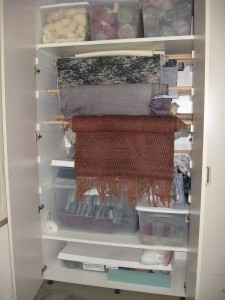
part of my handwoven collection waiting to be transformed
Here is how this has worked for me. Back in the eighties I was fascinated by rag material. I kept weaving to see how different prints would look and to see the interplay of different colored warps with the materials. I made yards and yards of it. It wove up quickly and I soon had much to choose from. At the time, I sewed and sold several Chanel-style jackets, several vests for men and women, sweatshirt style pullovers, as well as using the material to cover two chairs and the cushions for another. I also had planned a jacket for myself, but after doing the other items with it, I was burned out. Many yards of the material went into the yardage cabinet. Last fall I participated in a show with other artists and I needed some new garments. Two of the garments were made from my stockpiled rag material.
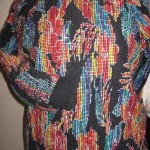
Rag sweatshirt from early '90's
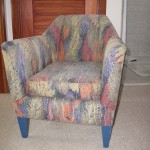
Rag covered chair 1984
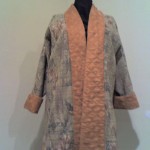
recent garment from rag material- 2010
And then there is restyling. I would guess that everybody who works with handwovens has some disasters in their past. I certainly do! One that I recently resurrected was one of the first garments I made. It was a black and white cotton material that I made into a very lovely women’s jacket . Unfortunately, I didn’t know that the material would ‘grow’ if not stabilized. Sometimes, this doesn’t make a difference, but this jacket was lined and within a month or two the fabric was bagging over the stabilized perimeter of the garment. I took it apart recently and recut it into a smaller, but stabilized, jacket.
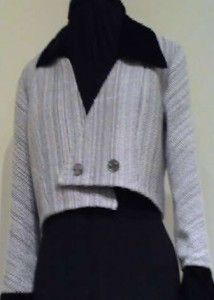
restyled "mistake" 2010
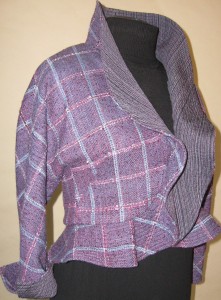
jacket from 18" material 2011
Also, consider the pieces woven for classes or challenges or to see how a structure works. These all can segue into something wearable or useful. Recently, I took part in our guild’s June fiber/yarn swap. One of the items I made was about six yards of material that was 18” wide and used the ‘swap’ yarn as an accent. The fabric failed as a show case for the swap yarn but the finished material was a very pleasing windowpane plaid that called out to be a jacket.
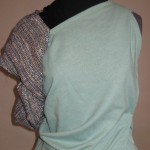
commercial fabric with handwoven sleeve 1988
Don’t forget, a small piece can be used as an accent.
If you’re not feeling confident about sewing garments for yourself or for others, consider making bags. They make a very good showcase for your woven material, are a good way of refining your sewing skills and are good conversation starters.
The point is that you have put a lot of time and effort into weaving material and it deserves to be out in the open where you can enjoy it and others can admire it. Every piece doesn’t have to be a perfect showpiece and you shouldn’t feel obliged to point out all the mistakes you think you made. You are a weaver and others will be amazed that you made your garment or accessory. Thank them for their interest and compliments and bask in the attention. And remember, the more sewing you do, the better you get at it.
Enough about Sewing! Let’s sample some drawloom weaving.